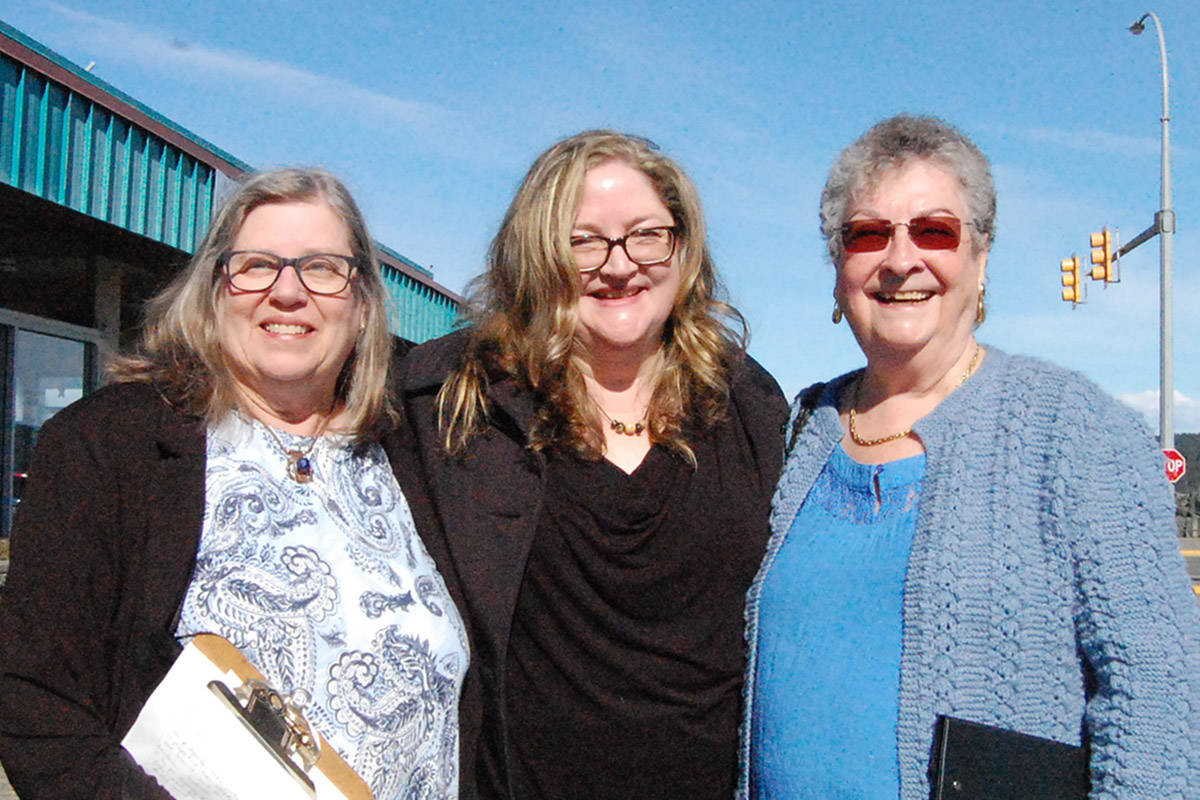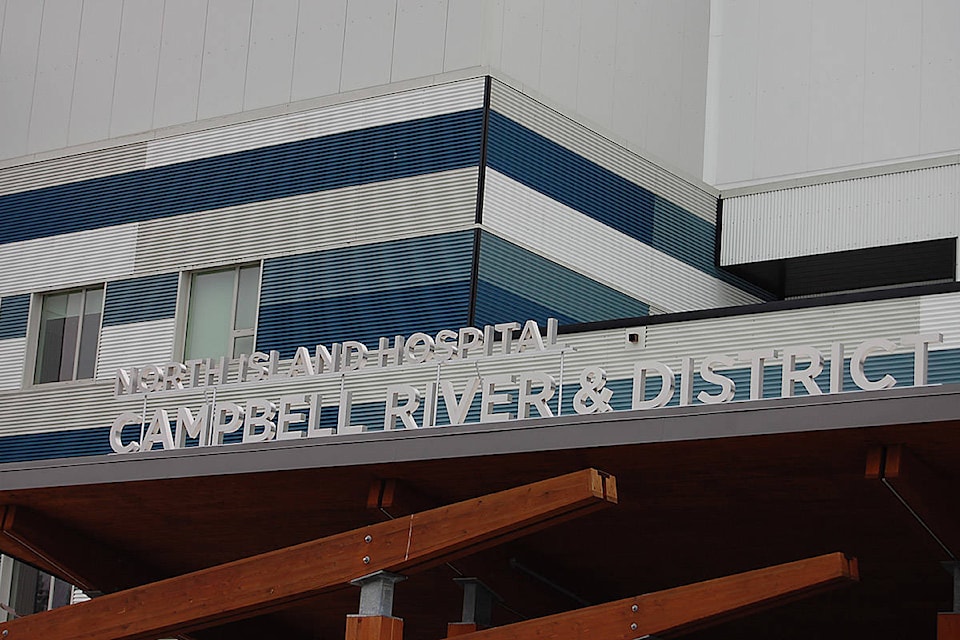North Island public health care advocates say that conditions in hospitals have reached a crisis point.
During a recent public forum in Campbell River, officials from Island Health – including its directors, president and CEO, and senior staff – heard that Campbell River’s new hospital is strained amid a shortage of long-term care beds.
“There are patients on stretchers in surgical day care as well as in every nook and cranny, just like before in the old hospital,” said Lois Jarvis of Citizens for Quality Health Care.
Patients waiting for placement in long-term care facilities face a two-year waiting list, but many won’t live that long, said Jarvis.
Some have been placed as far away as Duncan, she said, noting that pressure on local resources is increasing as more seniors move to Campbell River.
“We do not wish to see people moved from their home community,” said Jarvis.
She called for a new public long-term care facility, as opposed to a public-private partnership, with at least 50 beds for seniors in Campbell River.
The Discovery Harbour care home – previously called New Horizons – recently opened 18 beds, but Jarvis said those beds previously stood empty because of staffing issues. She said this kind of public-private facility must be well-regulated.
“Regulation on employee wages would be beneficial so that places like Discovery Harbour Care Centre are not constantly losing staff when they find a better paying position, and there would be less time continually training new inexperienced staff.”
Jarvis, a well-known local champion of public health care, also suggested a possible expansion to the Campbell River hospital, which opened in September 2017.
READ MORE:
She also called for more resources for home support, respite beds and palliative care.
Local dialysis services are also needed, so that patients don’t have to travel to Cumberland or Nanaimo, and the Campbell River hospital needs more accessible parking, she said.
She also spoke on behalf of the First Open Heart Society-Campbell River, which has raised over $300,000 for cardiac equipment and training for nurses and technicians in the public health care system since 1990.
The process for obtaining new medical gear needs to be streamlined because it “is always long and arduous and results in unnecessary waits for lifesaving equipment,” Jarvis said.
That includes a $52,000 ultrasound machine purchased in partnership with the Hospital Foundation, ordered in November but still not delivered.
She praised health care workers, saying they do their best, but “they are undermined by not having enough resources,” and she called on Island Health to accelerate efforts to provide better health care to seniors.
Despite this grim assessment, she said there are signs of progress, including new hiring and the expansion of an adult daycare program designed to provide relief for family caregivers.
“I feel a lot of optimism because there seems to be a different kind of attitude with this board and there have been a lot of positive changes made,” she said in an interview with the Mirror. “But there still is a lot of work to do.”
Loss of dignity
Other speakers at the public forum included writer and illustrator Liza Schmalcel, a Union Bay resident who made an impassioned appeal for change.
Schmalcel said her 83-year-old mother has frequently spent time in the Comox Valley hospital since October 2017 due to pneumonia and other medical problems.
Overcrowded conditions and a shortage of staff resulted in a loss of dignity, she said. The conditions are especially bad for seniors and lead to a risk of suicide.
“People feel neglected, denied of their basic right to safety and privacy, when they are most vulnerable, and experience a profound loss of control,” she said. “It breaks our hearts and spirits.”
Schmalcel said her mother reported several instances of poor treatment, including a nurse telling her, “I’m so sick of you old people in here all the time complaining” after her mother became upset about being moved to an overflow room.
READ MORE:
In other cases, she was told to “quit your bitching” and “suck it up.” She was also told she should be glad she wasn’t being placed in a hallway. During this time, Schmalcel said, her mother expressed a wish to die.
“Now I know it wasn’t depression, it was a loss of dignity,” Schmalcel said, adding that her mother’s condition improved significantly when she was moved to a private room.
She also raised questions about how hospitals are funded, saying the current model doesn’t provide any incentive to prevent hallway medicine and overcrowding. She suggested that hospitals could receive funding based on the type of space provided to patients, with no money being provided for hallway care.
New long-term beds
Island Health officials at the forum acknowledged the capacity problem, and pointed to efforts geared towards serving patients who don’t require acute care, so they don’t end up staying in hospital.
“We have around 25 people in hospital that are either waiting for a complex-care bed or they’re needing supports other than acute care before being discharged to the community,” said Dr. Elin Bjarnason, vice president of clinical service delivery for Island Health.
More long-term beds are needed, but money is the biggest obstacle, she said.
“Long-term care beds are complicated because they require buildings, which require capital money, and then we need to find the operating money,” she said.
“Our biggest challenge for long-term care beds is the capital money.”
READ MORE:
New investments include overnight teams that can serve up to a dozen patients in their homes during the night, along with expanded adult daycare services, both meant to reduce pressure on hospitals.
Meanwhile, part of the Campbell River hospital was recently converted to create 10 new permanent beds, meaning the overall capacity has increased from 95 to 105 beds.
Bjarnason, who oversees all hospitals on the Island, as well as home and community care services, attributed some of the problems at the new North Island hospitals to growing pains. She added that capacity challenges have eased in recent weeks, following a seasonal surge of patients in February. Capacity at the Campbell River hospital stood at roughly 105 per cent last week, according to Bjarnason.
“There are no patients in the hallways at this time and there haven’t been for a number of weeks,” she said.
Research by local public health advocates indicates that capacity at the Campbell River hospital averaged about 120 per cent over the past year, while at the Comox Valley hospital it was roughly 112 per cent.
david.koch@campbellrivermirror.com
Like us on and follow us on




